Great design crosses retail categories, so take advantage of tactics traditional retailers have used successfully.
Dispensary operators can expand their retail design horizons — and send sales soaring — by cribbing from the highest of high-end jewelry boutiques and the lowest of low-end supermarkets, not to mention beauty, big-box, and department stores. After all, many of those businesses seek the same goals and have weathered some of the same challenges experienced by cannabis retail.
We spoke with some of the best in the business, including designers who began their careers in traditional design before branching into cannabis. They shared the conceptual tools of their trade that could help dispensaries up their game in surprisingly affordable ways, from clever fixtures and varied lighting to color coding, bold signage, and arresting, adaptable displays.
Pro tip: start with a brand guide
Inspiration
Nordstrom, Diptyque
How to execute
To stay on brand, Toronto-based Visual Elements asks both traditional retail and dispensary clients to complete an extensive questionnaire. The answers provide the design team with brand familiarity, said Creative Director Desmond Chan.
“It makes the client think about what their brand stands for. ‘Everyone sells cannabis, but how can we differentiate?’” he said. “Our team learns the meaning behind the brand and its mission statement, and then we help set the client’s operation apart.”
Also consider creating a mood board, advised Wil Walker, president of New York’s Display Dispensary, a division of 100-year-old Econoco Corp. The companies cater to both conventional and cannabis retailers. Mood boards typically consist of inspiring images, text, and material samples that help designers, particularly in the fashion and home-furnishings industries, define and maintain the emotional tone and color palette for a project.
Pro tip: spin a story
Inspiration
Gentle Monster
How to execute
Immerse customers in the brand’s story as soon as they enter the store, advised Danielle Marzarella, vice president of business development at Visual Elements. For instance, one Toronto-area dispensary has “a major retro 1970s vibe with a Volkswagen bus and TV screens playing shows from the era as soon as you enter,” she said. “So, you’re immersed in that environment immediately.”
Chan advised dispensary owners to “treat your store like a lifestyle destination and not a one-time transactional space. Dispensaries can do better at this.
“Your tale should start before you display a single item for sale,” he added, and the tale’s thread should run throughout the space, as threads do in the most evocative traditional retailers. “That’s how you transform shopping into an experience—and increase how long the customer stays.”
So, ask what lifestyle you’re trying to capture — and for whom. Then, spin a tale that will resonate with consumers who embrace that lifestyle or values system.
Boone Town Provisions in Boonton, New Jersey, riffs on a campsite theme — with a sense of humor. A bespoke ursine mannequin named Tokey the Bear catches customers’ eyes right away. Standing nine feet tall and holding a sign stating “Where there’s smoke, there’s fire,” Tokey lends a playful personality to the store. Wood and moss add amusement to display cases and lure shoppers to the merchandise.
“We pulled these ideas from traditional retail to encourage TikTok-ers,” said Walker, whose firm designed and manufactured both Tokey and the store’s fixtures.
Also encourage impulse sales with promotional items placed near the checkout stations. “These should go beyond branded T-shirts, ball caps, and hoodies,” Chan said. “Those are played out. Be creative. Determine what your shoppers want to buy.” Vinyl records? Non-infused food items? The possibilities are endless but will attract the most attention if they echo the store’s overriding theme.
“It boils down to a strong brand identity,” said Marzarella. “Once you know that, you can determine what outside-the-box merchandise you should offer. It must fit that singular vision.”

Pro tip: pay attention to geodemographics
Inspiration
Trader Joe’s, Crate & Barrel
How to execute
Geodemographics is a fairly new field of study involving the way demographics, lifestyles, and behaviors interact to give neighborhoods and larger regions their own “local color.” Stores in gentrifying areas populated primarily by young, childless professionals should have a completely different atmosphere from those in areas where families and older consumers reside. The vibe in urban stores will appeal to a crowd that is wholly different from the crowd attracted to stores in rural areas. Chains and multistate operators must be particularly attuned to the differences between markets.
“Each store should be uniquely different, based on the location it’s in,” Marzarella said, adding that doesn’t mean designers should throw branding out the window. Stores can be tailored to the neighborhood clientele yet retain branding elements that identify them as part of a larger family.
In the cannabis industry, Green Qween’s dispensaries do an excellent job of both cleaving to the family’s genetics and fitting in with diverse communities. Marzarella called the chain “a beautiful story.”
“Each location reflects the community,” she said. “One has a bodega-type style as a nod to the bodegas in Sherman Oaks, mimicking ’60s and ’70s grocery displays. You can have fun being creative with your displays and inventory based on the location.”
Hugh Boyd, principal at Hugh A. Boyd Architects, advises dispensaries to “design for your marketplace, as we do elsewhere in retail. We might use warm woods and flat white cases in areas such as a small Midwest town, but in hip urban areas you can go much more upscale with materials.”

Pro tip: plant destination buys in the back and seed temptation along the path
Inspiration
Target, Walmart
How to execute
Just as traditional retailers place impulse buys near cash registers, dispensaries should place tasty treats along the path to popular purchases. Depending on the customer base, these might include lovely lighter and ashtray sets, beautifully packaged papers, eye-catching rolling trays, or other accessories Chan said.
“Many chain stores and fashion boutiques place clearance wares at the back of the store,” he said. “Dispensaries can do this, too, and have customers pass grinders and rolling papers along the way.”
Stock seasonal items and limited editions at the front of the store, so customers feel there’s something fresh and unexpected to be found, enticing them to venture inside. And make sure customers easily can spot displays tempting to TikTokers and other social-media mavens. Even casual influencers may turn out to be your best promoters, Walker suggested.
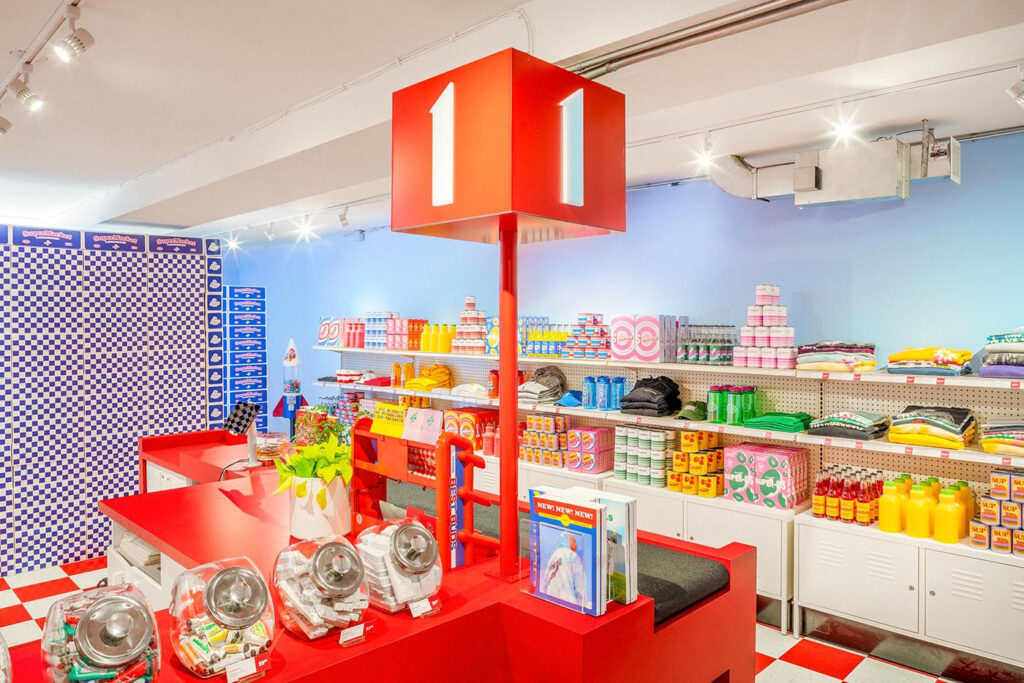
Pro tip: meticulously organize the back of the house
Inspiration
Foot Locker, Finish Line, Journeys
How to execute
Ensure whatever backroom real estate you have remains highly organized, just as shoe stores do. They group products by category, brand, color, and size; dispensaries can employ the same process. Meticulous backroom organization will speed customer throughput and perhaps reduce the space needed for stock, Marzarella said.
“If you don’t have spare space, use back-of-the-house shelving,” she suggested. “Also, categorize products by expiration dates. A good designer can find ways to deliver the space for that.”
Of course, a successful front of the house will be as well-thought-out and organized as the storeroom.
“The point is efficiency and flow in your layouts,” Chan said. “It’s about how a product goes from delivery at the back door to out the front door after the sale.”
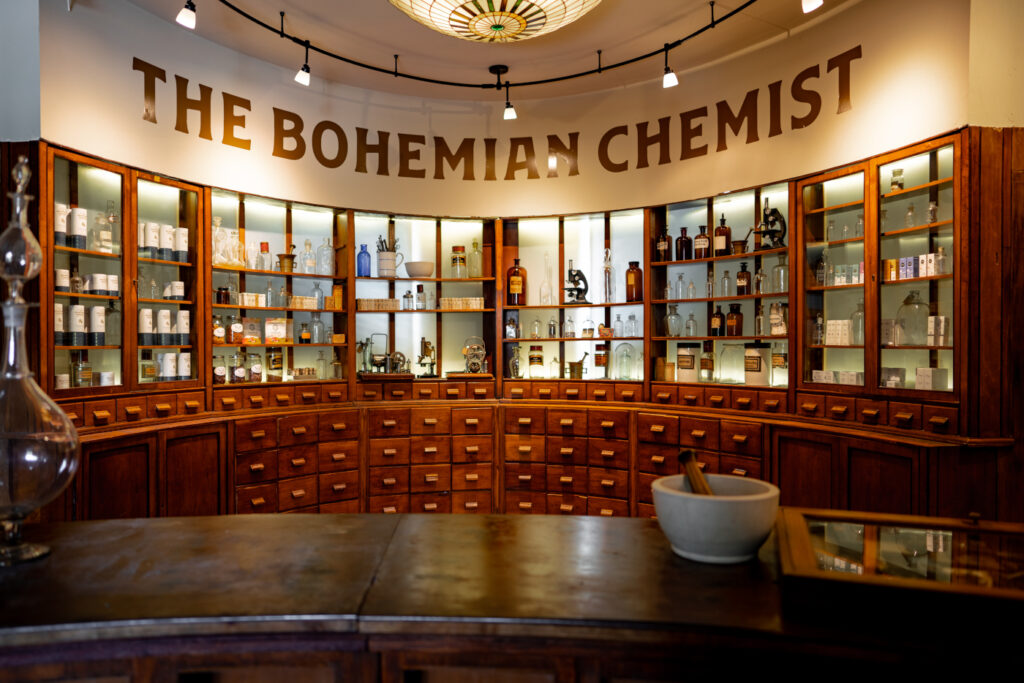
Pro tip: provide express checkout lanes
Inspiration
Albertson’s, Kroger, Publix.
How to execute
Just as grocery stores offer express checkout lanes, dispensaries can allocate one or two points of sale for quick checkout or for online purchase pickups. “Some people are there just to pick up and get out quickly,” Chan said.
In addition, just as grocers place impulse items such as bubble gum and magazines at the point of sale to encourage impulse buys, dispensaries can take advantage of shoppers’ wait time. Position papers, edibles, and matches on the path to the cash stands, or splash them on LED screens containing menus and marketing material.
Even impulse purchases may require education, Chan said, offering another touchpoint for consumer interaction and upselling. “As at other stores, you need knowledgeable staff to educate customers about products and their benefits,” he said.
Digital signage reminding shoppers about sales also can be beneficial at the point of sale, Walker said.

Pro tip: offer a decompression zone
Inspiration
Gucci, Aesop, Neiman Marcus
How to execute
Most shoppers appreciate a chance to orient themselves within their surroundings before getting down to business. “Breathing space” at the front of the store allows them to unwind from the hassles of daily life and refocus—hopefully on their purchase plans.
High-end retail stores often greet customers with a feature wall, perhaps with a mannequin or a display that’s intriguing and on-brand while keying into the shop’s concept, Marzarella said. Even chain department stores refrain from assaulting shoppers with merchandise right away, Walker pointed out. Target, for example, leaves about fifty feet between the entrance and the first product.
“That’s because people need time to adjust to the space,” he said. “If you hit them right away with products, it will throw them off. They need a cooling-off period—time and space to escape what was on their mind walking from the car to the store. Then they can get into the headspace of ‘I’m here to buy something.’”

Pro tip: place easy-to-spot signs
Inspiration
Costco, Sam’s Club
How to execute
Point the way to popular categories, sales, checkout counters, or other essential points of interest with easily read signs visible from across the store and from any angle, Chan recommended. “Clear signage like you see in grocery stores lets customers who are in a hurry reduce the time and friction spent in the shopping experience.”
Also provide well-marked areas for pick-up or to-go items and for those wanting in-and-out (quick) service.
“Dispensaries also have potential for menu boards with great graphics like you see in a pastry or coffee shop,” Boyd said. Digital signage is easy to change to meet evolving needs, he added. They also allow retailers to provide real-time pricing and promotions.
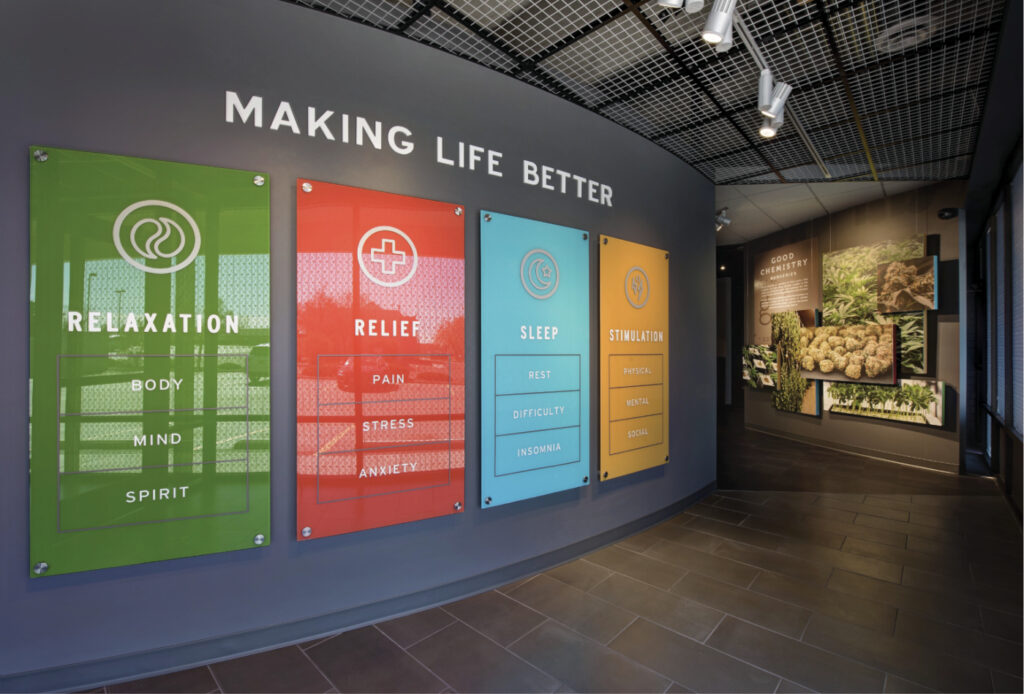
Pro tip: curate the menu
Inspiration
McDonald’s, In-N-Out Burger
How to execute
Bombarding customers with a menu containing every item in stock is a recipe for decision paralysis. Instead of finding just what they seek, customers may become so overwhelmed by choices that they end up purchasing nothing at all.
“You don’t want to overwhelm your customer, nor do you want a cluttered, cheap look,” said Cindy Lam, principal designer at Remedy Design Group in Los Angeles. “McDonald’s and In-N-Out don’t oversaturate their menus. They know what their customer craves, and that’s what they offer. If a dish’s sales are weak, they remove it.
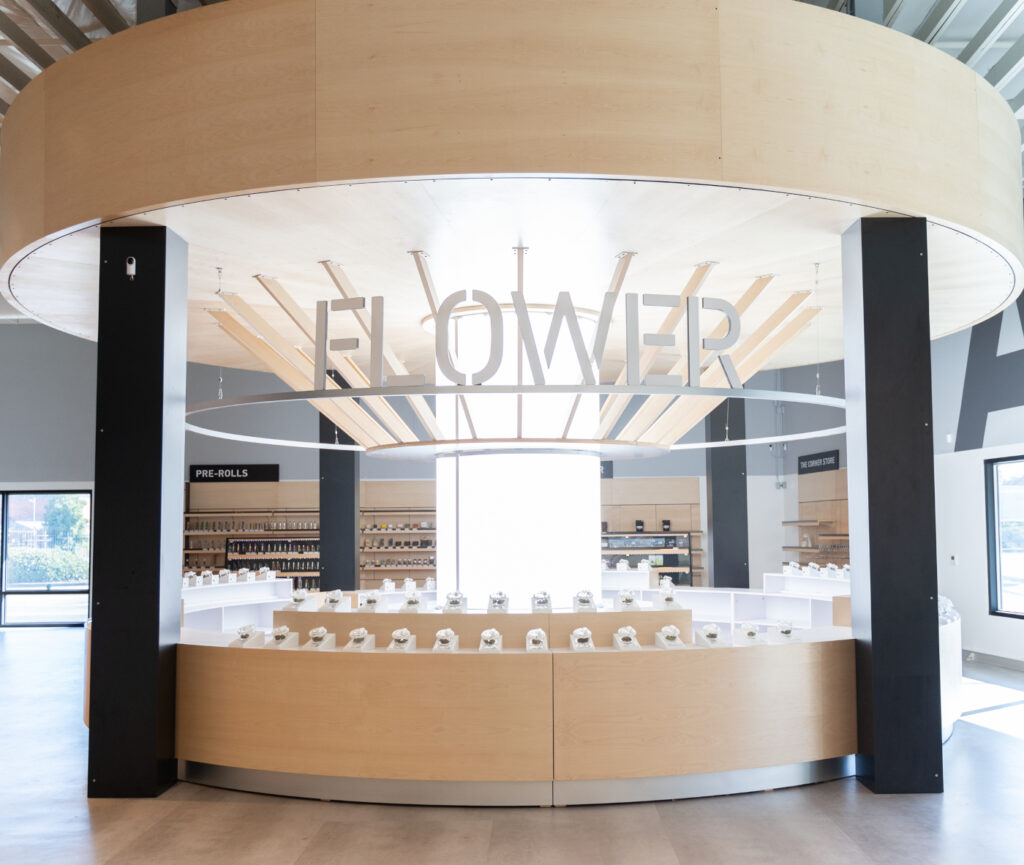
Pro tip: tailor lighting to product and purpose
Inspiration
Jared, Zales, Kay Jewelers
How to execute
“The best light I’ve seen in a dispensary is direct lighting with tiny spotlights—almost the smaller the better—to highlight leaf texture,” said Boyd. “The right lighting for specific products is critical. Lighting can enhance or take away from the product experience.”
When Boyd designs grocery markets and food halls, he chooses different shades of light for fish, meat, and produce so each looks fresh and seduces the shopper.
As for dispensaries, proper lighting helps customers see flower color and texture. “Really great lighting would have a great impact on sales by making the product look very desirable,” Boyd said.
In addition to color, lighting’s intensity and temperature (warm or cool) affect customers’ perception of the products on display. “Leaf texture and color are so subtle, so you don’t want to overlight or use general lighting that’s too bright,” Boyd said. “Instead, use a focal light, because the customer’s eyes go to the brightest object in the space.”
He considers cannabis “unique retail. I compare it to a really upscale wine store, where ultraviolet light against the bottles makes it almost like a museum store,” he said. “Dispensaries are retail spaces, but they should have almost a hospitality feel. Besides strong focal lighting on each product, elsewhere you want fun and decorative lighting to give the space energy. You may want lighting like you’d experience in a bar or a coffee shop.”
Within cases, borrow from museums and jewelry and pastry stores, Boyd advised. “Often jewelers use spotlights on tiny poles that they scatter in glass cases,” he said.
Ultimately, lighting’s goal is to goose sales through subtle cues. “Cannabis often isn’t something you need,” Boyd said. “It’s something you want.” As it does in fine jewelry stores, the right lighting can turn up the want factor.
Also as in jewelry boutiques, lighting must be tailored to match the expense of the items on display. Lighting inside cases displaying craft-grown, small-batch flower should be higher end than the lights used to illuminate a rack of mylar bags.
“Lighting is a storytelling tool and helps set the mood,” Chan said. “It’s one of the most important elements—pivotal to telling your story throughout.” Soft, focused lighting even can elevate the perceived value of products, he added.
The one type of lighting best not used is the harsh, fluorescent lighting typically used in pharmacies, according to Chan. “Warm and soften your overall lighting to be inviting, and use focus lights to highlight luxury products and promotions,” he advised.

Pro tip: set a mood
Inspiration
Brilliant Earth, The Met Store, MoMA Design Store
How to execute
Sophisticated museum stores and boutique jewelers are masters of psychological marketing. They realize subtle sensory triggers can set a mood that nudges shoppers into a ready-to-buy frame of mind.
Dispensaries can set a mood from the get-go with lighting, music, and even barely-there fragrance. Just be careful environmental scents don’t compete with the aroma of the products, Boyd advised. Like fine tea leaves, each cannabis flower emits a unique medley of aromas.
In addition, “any music should reinforce brand identity and contribute to the store’s energy,” Chan warned.
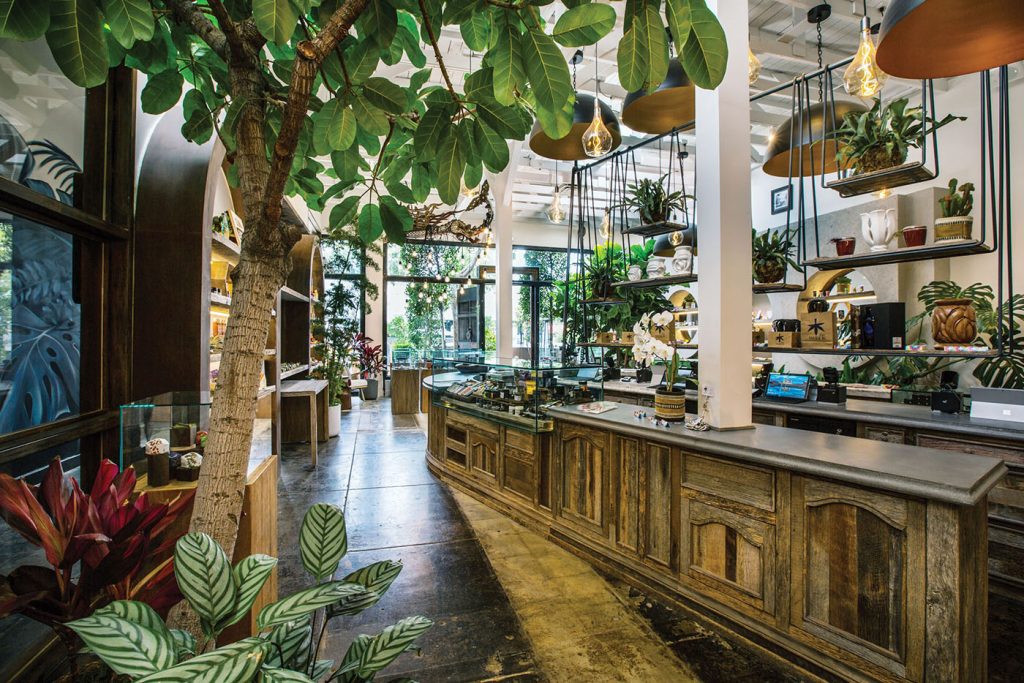
Pro tip: use fashion-retail techniques
Inspiration
Sur la Table, Williams-Sonoma
How to execute
Mannequins displaying products can surprise and delight customers, turning an ordinary shopping trip into a visual adventure. A hand holding a flower in a display case makes an unexpected statement, for example. “A mannequin can seem to be rolling or smoking a joint,” Walker suggested. “It’s such an underused technique. So are carts or trolleys displaying the hot product of the month.”
Walker also has used faux lemons to jazz up displays of the strain Lemon Haze. “Add texture and color to elevate the display,” he said. “It’s about thinking outside the box.”
Also consider bringing in a tree, plant, or moss wall to warm up the space, he suggested. “Instead of avoiding nature, own it; run with it. It’s beautiful when done well. But it cannot be fake.”
According to Lam, “Retail is theater. Use props to engage, drive traffic, and entertain.”
Pro tip: collaborate
Inspiration
Gentle Monster x Tekken8, Pat McGrath Labs x Candy Crush Saga
How to execute
Combining premium brands with similar customer bases creates synergy and buzz — and can lend additional cachet to the best-selling products from both. Collaborations are a time-honored tradition among product brands, but dispensaries haven’t leaned into the trend … yet. They should, Lam said.
Collaborations between dispensaries and product brands are custom-made for generating social-media buzz, she said. In the store, place items toward the front where shoppers can’t avoid them. Even if the merchandise is merely repackaged versions of your traditional bestsellers, they’ll feel new again to consumers.
Retail partnerships like those between uber-hip global eyewear chain Gentle Monster and the gaming world’s Tekken8, and Pat McGrath Labs’ bestsellers reproduced in limited-edition Candy Crush Saga-inspired striped cases proved magical for the partners.

Pro tip: establish ‘stores within a store’
Inspiration
Sephora at JCPenney, Louis Vuitton at Neiman Marcus
How to execute
Partner with accessories or lifestyle labels to offer select wares, ideally as exclusives.
Dispensaries can flaunt merchandise by placing it at the end of aisles, with color-coded fixtures and signs for each brand. The same fixtures can make the scene a store within the store. “One wall bay can be dedicated to Brand A and another with a different color theme to Brand B,” suggested Lam, whose mainstream cred includes in-house design stints at Starbucks and Cole Haan.
Appealing oversized graphics and images can become inexpensive ways to alert customers where they can find their favorite products. Area rugs also can announce a section worth checking out, she said. “Too often dispensaries design horizontally but forget they can go vertically too,” she said. “So when [your competitors] go low, you go high.”
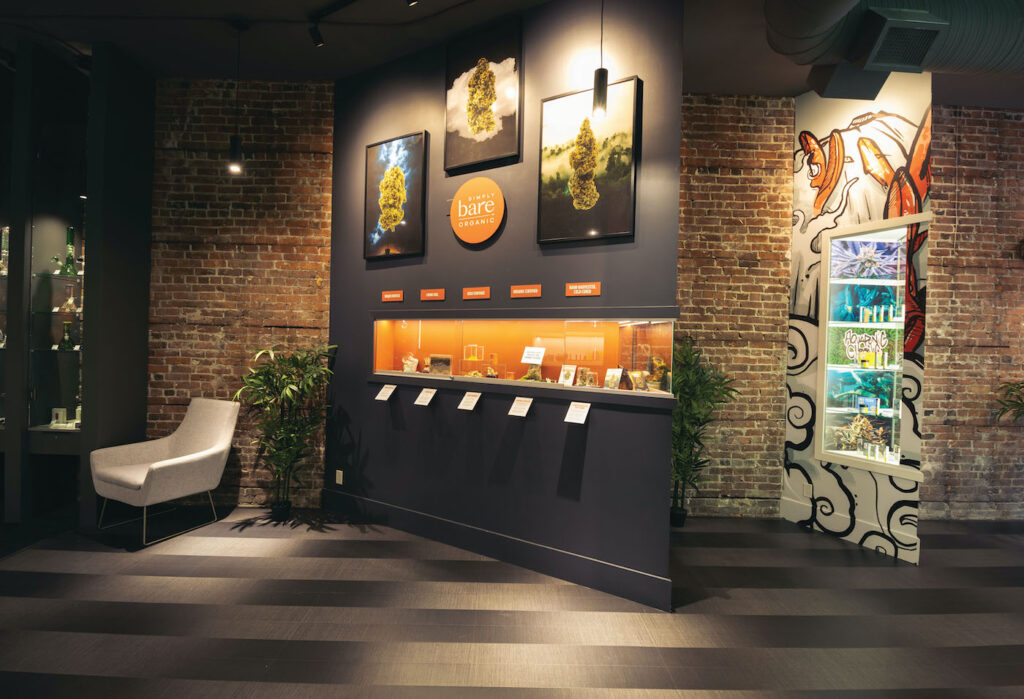
Pro tip: embrace technology
Inspiration
Jo Malone London, Sephora
How to execute
Even stores with a less technologically inclined clientele can make use of devices like iPads and ordering kiosks — as attention-attracting novelties, if nothing else. Place iPads where both customers and budtenders can reach them easily. The point is to deliver personalized information to salesclerks and allow shoppers with an independent streak to learn about and purchase products on their own terms.
Obviously, dispensaries want to generate long-term customer loyalty and not just one-time transactions. Digital devices assist with that goal by capturing customer profiles and purchase histories, Chan said. Not only do shoppers feel heard when future interactions display a knowledge of past favorites, but the dispensary also can respond faster and better at each visit.
“Maybe they’ve forgotten what they ordered [previously],” he said. “Imagine if the vendor can pull up their records and see what they liked or disliked in the past. That builds loyalty and education. These are key lessons from traditional retail categories.”
Artificially intelligent systems are particularly adept at keeping the score, said Walker, who frequents Sephora “because they have very knowledgeable people, a wide variety of products, and use AI to know everything I use for my sensitive skin.”
Consumers seek products for recreation, pain, anxiety, sleep, and a host of other conditions. All that information can be tracked in an AI-assisted system to help predict future behavior based on past interactions. Walker recommends using AI to suggest products that may address customers’ needs better or new releases they may enjoy trying.
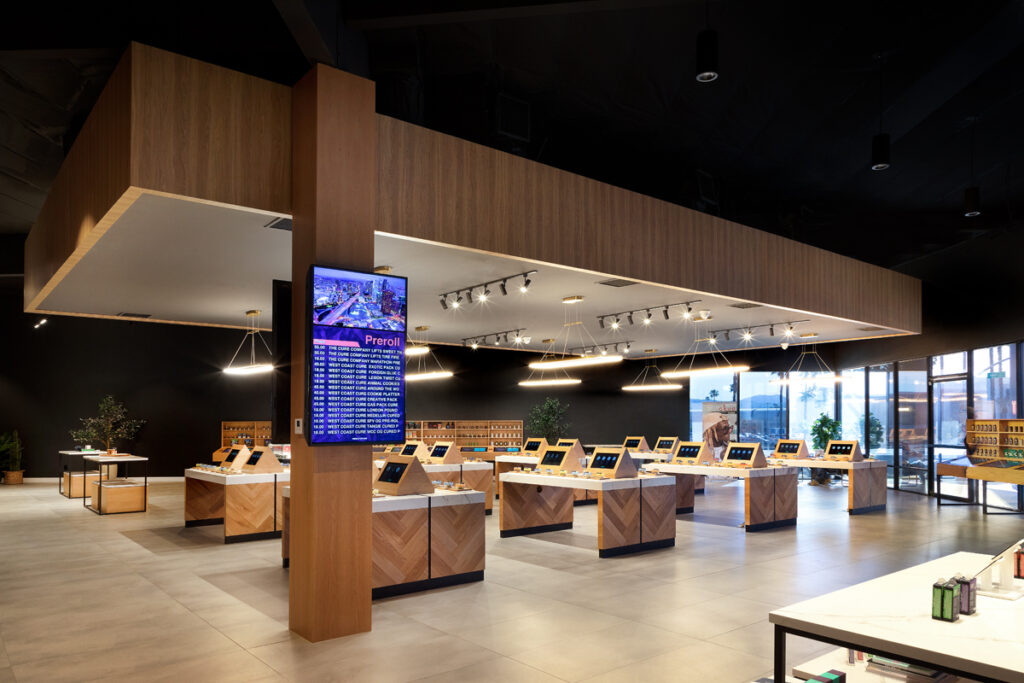
Pro tip: offer the opportunity to linger, unwind, and learn
Inspiration
Saks Fifth Avenue, Harrods, Apple Store
How to execute
“Give shoppers an opportunity to pause and relax,” Lam said. Devote a comfy corner with a sofa, table, and lamp. Add coffee-table books or magazines for extra interest. “It should almost feel like home.”
Or, as Chan suggested, “you can take advantage of the space for personalized consultations for high-value customers seeking a curated experience. You want them to feel appreciated.”
But remember: When choosing a cozy space’s décor, let customers and their preferences guide the look and feel, and be ready for the space to evolve. “It’s not about you. It’s about them,” Walker said.
Or mimic Apple’s Genius Bar, he suggested. Customers who seek repairs for a broken phone or laptop may sit at a counter and wait while browsing products and educational materials on an iPad. The tactic sparks curiosity and desire. High-end clothing boutiques and furniture stores offer the same sort of “browse while you wait in comfort” approach.
“When you put similar spaces in the cannabis world, sales can grow by leaps and bounds,” Walker said. “Some customers can use digital screens, while others can learn on their own or with a budtender’s help.”





